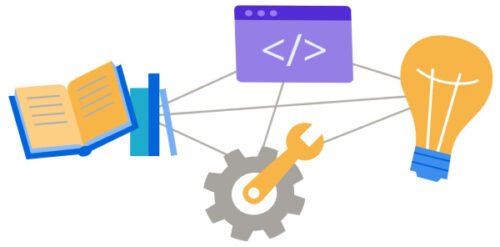

- NOW GENERALLY OPENJDK AVAILABLE MICROSOFT SOURCE FOR FREE
- NOW GENERALLY OPENJDK AVAILABLE MICROSOFT SOURCE PRO
- NOW GENERALLY OPENJDK AVAILABLE MICROSOFT SOURCE CODE
- NOW GENERALLY OPENJDK AVAILABLE MICROSOFT SOURCE FREE
It was originally built to run on mobile devices with limited memory and it’s been optimized for fast startup, lower memory footprint, and quick ramp-up. Per Eclipse, it is a “high performance, scalable, Java virtual machine (JVM) implementation that represents hundreds of person-years of effort.”

Eclipse OpenJ9Įclipse OpenJ9 is an IBM contribution to the Eclipse Project. It has some cryptography differences, slightly newer timezone data (taken from RHEL/CentOS), and includes a JavaFX and Java Web Start implementation. It is baselined from OpenJDK and TCK compliant, and it may include bug fixes for RHEL/CentOS ahead of incorporation into OpenJDK.
NOW GENERALLY OPENJDK AVAILABLE MICROSOFT SOURCE CODE
Red Hat claims its OpenJDK build is “functionally very similar” to Oracle’s and “should require little to no changes”, although it’s likely to require some code changes.

NOW GENERALLY OPENJDK AVAILABLE MICROSOFT SOURCE PRO
They’re also publishing an early-access binary for Java 16 for Windows on ARM, based on the latest OpenJDK 16+36 release, and providing a port to Windows ARM ( JEP-388 ) for Surface Pro X. It’s TCK compliant for Java 11 and includes binaries for Java 11, based on OpenJDK 11.0.10+9, on 圆4 server and desktop environments on macOS, Linux, and Windows.
NOW GENERALLY OPENJDK AVAILABLE MICROSOFT SOURCE FREE
It’s an open-source, no-cost long-term support (LTS) distribution of OpenJDK that is free for anyone to deploy anywhere. They are essentially providing Windows-specific optimizations that haven’t made it back to the OpenJDK source code yet. Microsoft just announced its own OpenJDK build.

Here’s a run-down of the most commonly used ones and their primary offerings. With all these choices, we felt like it was a good time to review the currently available OpenJDK builds. And others (e.g., Zulu and AdoptOpenJDK) appear to be trying to become a non-Oracle supplier of builds with their own (ostensibly cheaper) support contracts. Others (e.g., Zing and OpenJ9) are adding technology in some way. Some of them (e.g., Microsoft, Red Hat, and Amazon Corretto), seem to have a self-serving purpose-namely, to help Java run better (or at all) on their own technology. Now, well into 2021, we’re at the point where there are many alternatives to the original Oracle JDK build.
NOW GENERALLY OPENJDK AVAILABLE MICROSOFT SOURCE FOR FREE
Ever since Oracle, in 2018, split its JDK build licensing into two tiers-commercial, which can be used for free in development and testing but you have to pay to use it in production, and open-source, which is free in any environment-quite a few open-source builds based on the OpenJDK source code have appeared.


 0 kommentar(er)
0 kommentar(er)
